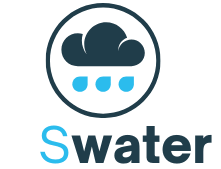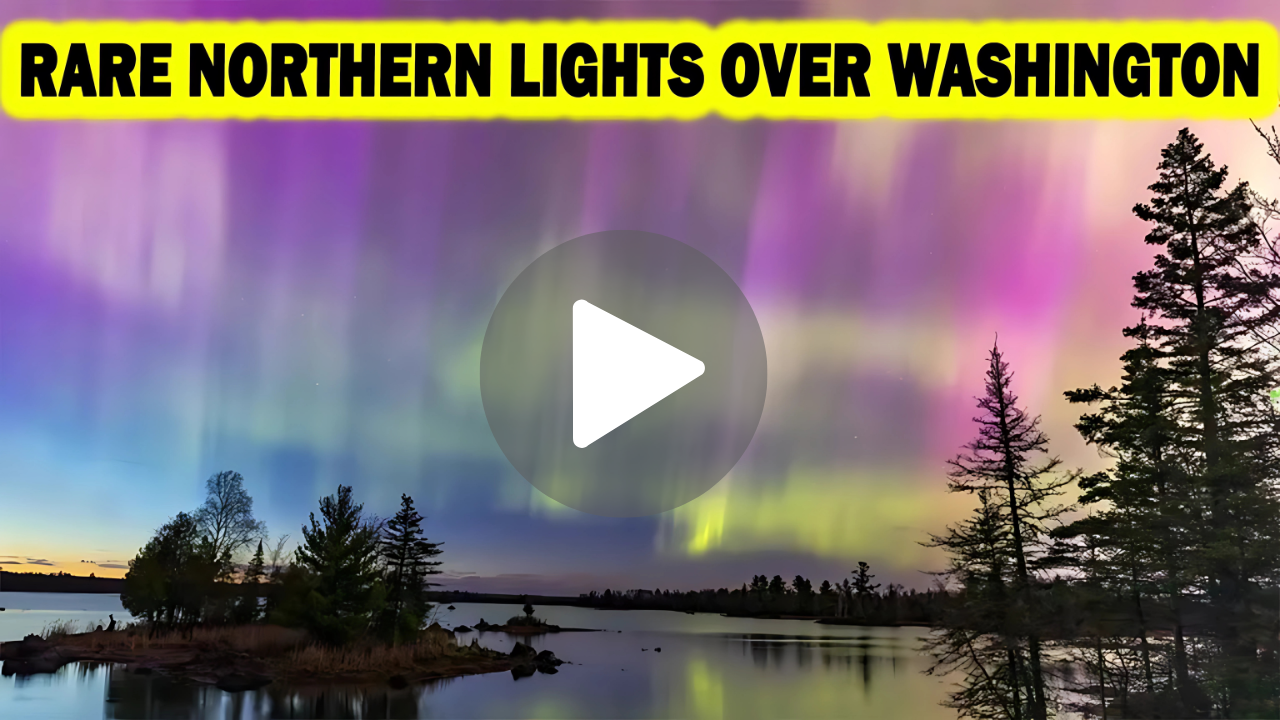Aurora Borealis Washington Despite recent solar activity creating stunning aurora displays across parts of the northern United States, Washington residents shouldn’t expect to witness the mesmerizing northern lights dancing across their skies Monday evening. While the aftereffects of a powerful coronal mass ejection continue to influence Earth’s magnetic field, several factors are working against prime viewing conditions in the Pacific Northwest.
Understanding the Weekend’s Solar Storm Event
The cosmic drama began Friday evening when our sun unleashed a massive coronal mass ejection (CME) into space. This celestial event sent billions of tons of superheated solar plasma hurtling toward Earth at incredible speeds. By late Sunday, this charged solar material finally reached our planet’s protective magnetic shield, triggering what space weather experts classify as a moderate geomagnetic storm.
Aurora Borealis Washington
These solar storms represent some of nature’s most spectacular phenomena. When electrically charged particles from the sun collide with gases in Earth’s upper atmosphere, they create the brilliant light displays we know as aurora borealis. The collision process excites oxygen and nitrogen molecules, causing them to emit photons in characteristic green, red, and purple hues that paint the night sky in ethereal colors.
The Science Behind Aurora Formation
Aurora formation requires a delicate balance of several atmospheric and magnetic conditions. Solar wind particles must first penetrate Earth’s magnetosphere, the invisible magnetic bubble surrounding our planet. This penetration typically occurs near the magnetic poles, where field lines converge and create natural entry points for charged particles.
Once inside the magnetosphere, these particles spiral down magnetic field lines toward the polar regions. As they descend through increasingly dense atmospheric layers, they begin colliding with gas molecules approximately 60 to 200 miles above Earth’s surface. The altitude and type of gas molecules determine the aurora’s color palette – oxygen produces green and red emissions, while nitrogen contributes blue and purple tones.
Why Monday Night Poses Viewing Challenges
Several interconnected factors make Monday evening particularly unsuitable for northern lights viewing across Washington state. The primary issue centers on timing rather than storm intensity.
Daylight Interference Pattern
The geomagnetic storm’s peak intensity is forecast to occur around 11:00 AM Pacific Time on Monday. This timing creates a fundamental problem for aurora enthusiasts since northern lights require complete darkness to become visible to the naked eye. Even the faintest twilight can completely wash out the subtle glow of distant aurora displays.
Solar storm effects typically persist for 12-24 hours after peak intensity, but they gradually weaken over time. By Monday evening, when darkness finally arrives in Washington, the geomagnetic disturbance will have diminished considerably from its midday maximum.
Kp Index Measurements and Visibility Thresholds
Space weather scientists use the Kp index to quantify geomagnetic storm intensity on a scale from 0 to 9. Current forecasts predict Kp levels between 5 and 6 throughout Monday and into early Tuesday morning. While these numbers indicate moderate geomagnetic activity, they fall short of the Kp 7+ levels typically required for aurora visibility at Washington’s latitude.
Kp Index Reference Table:
| Kp Level | Storm Classification | Aurora Visibility Zone |
|---|---|---|
| 0-2 | Quiet to Unsettled | Arctic Circle Only |
| 3-4 | Minor Storm | Northern Canada/Alaska |
| 5-6 | Moderate Storm | Northern US Border States |
| 7-8 | Strong Storm | Pacific Northwest Possible |
| 9 | Extreme Storm | Visible to Southern US |
Geographic Limitations
Washington state’s geographic position presents additional challenges for aurora viewing. Located between 45.5° and 49° north latitude, the Pacific Northwest sits at the southern edge of the typical aurora viewing zone during moderate geomagnetic storms. Even during favorable conditions, aurora displays in this region tend to appear as faint glows along the northern horizon rather than the dramatic overhead curtains seen in Alaska or northern Canada.
Light Pollution and Urban Challenges
Modern aurora viewing faces significant obstacles from artificial light pollution concentrated in urban areas. Cities like Seattle, Spokane, and Tacoma generate tremendous amounts of upward-scattered light that effectively drowns out faint aurora displays. This urban glow can mask aurora activity even during moderately strong geomagnetic storms.
Optimal Viewing Locations
For those determined to search for any residual aurora activity, the best opportunities exist in Washington’s darkest locations. Remote areas of the North Cascades, Olympic Peninsula, or eastern Washington’s rural counties offer the least light-polluted skies. However, even these pristine locations require clear weather conditions and patience for any potential sightings.
Professional aurora photographers often travel hundreds of miles from major cities to capture quality images. They understand that successful aurora viewing demands not just favorable space weather, but also careful attention to terrestrial conditions including cloud cover, atmospheric haze, and moonlight levels.
Solar Maximum and Future Opportunities
Despite Monday’s disappointing prospects, aurora enthusiasts have reasons for optimism looking ahead. Our sun currently exists in a phase called solar maximum, representing the peak of its natural 11-year activity cycle. During solar maximum periods, coronal mass ejections and solar flares occur with much greater frequency than during quiet phases.
Understanding Solar Cycles
Solar activity follows predictable patterns discovered through centuries of astronomical observation. During solar minimum, the sun’s surface appears relatively calm with few sunspots or eruptions. As the cycle progresses toward maximum, magnetic field lines become increasingly tangled and unstable, leading to frequent explosive releases of energy.
The current solar maximum may continue through late 2024 or even into early 2025, potentially creating numerous additional opportunities for northern lights viewing across the northern United States. Space weather prediction centers monitor solar activity continuously, providing advance warning of incoming geomagnetic storms.
Preparing for Future Aurora Events
Successful aurora viewing requires preparation and realistic expectations. Photographers recommend checking space weather forecasts regularly through resources like NOAA’s Space Weather Prediction Center. Mobile apps can provide real-time Kp index updates and aurora probability maps.
Essential equipment includes warm clothing for extended outdoor observation periods, a reliable flashlight with red filter to preserve night vision, and perhaps a camera capable of long exposures. Many smartphones can capture aurora displays using night mode settings, though dedicated cameras produce superior results.
The Broader Context of Space Weather
Monday’s geomagnetic storm represents just one example of our sun’s constant influence on Earth’s technological and natural systems. While aurora displays capture public imagination, space weather events can also disrupt satellite communications, GPS navigation systems, and electrical power grids.
Technological Vulnerabilities
Modern society’s dependence on electronic infrastructure makes us increasingly vulnerable to severe space weather events. The 1989 Quebec blackout demonstrated how intense geomagnetic storms can overload electrical transmission systems, leaving millions without power for hours or days.
Satellite operators routinely monitor space weather forecasts to protect expensive equipment from radiation damage. Airlines adjust polar flight routes during major storms to avoid communication disruptions and protect passengers from increased cosmic radiation exposure.
Weather Factors and Viewing Conditions
Even perfect space weather conditions mean nothing without clear terrestrial skies. Washington’s notoriously cloudy climate presents ongoing challenges for astronomical observations of all types. Marine layers from the Pacific Ocean frequently obscure nighttime skies, particularly in western regions.
Eastern Washington generally offers better astronomical seeing conditions due to its drier climate and higher elevation locations. The Palouse region and areas near the Idaho border experience clearer skies more consistently than coastal areas.
Historical Aurora Activity in the Pacific Northwest
Documented aurora sightings in Washington state remain relatively rare but not unprecedented. The massive geomagnetic storm of October 2003 brought visible aurora displays as far south as California and Arizona. Similarly, the 1989 storm that caused the Quebec blackout also produced aurora sightings throughout the Pacific Northwest.
Local astronomy clubs maintain records of historical aurora observations, providing valuable context for evaluating current and future viewing opportunities. These records suggest that strong geomagnetic storms capable of producing visible aurora in Washington occur roughly once every few years during solar maximum periods.
Frequently Asked Questions
Q: Can I still see northern lights anywhere in Washington Monday night?
The northern border areas near Canada have the best chance, but visibility remains unlikely due to timing and storm intensity.
Q: When might we see northern lights in Washington next?
Future opportunities depend on solar activity during the ongoing solar maximum period, potentially within the next 6-12 months.
Q: What apps help track aurora activity?
Aurora Alert, Space Weather Live, and NOAA’s official space weather app provide real-time geomagnetic storm updates and forecasts.

